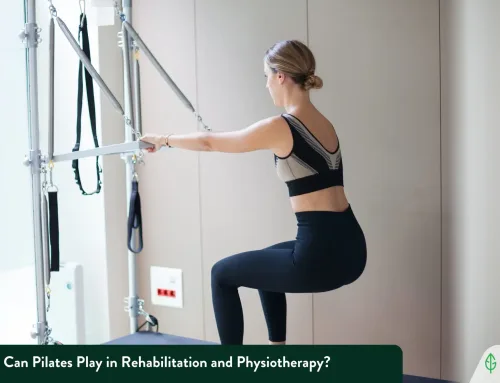For both men and women to remain in the best possible health and wellness, a strong pelvic floor is essential. Although several forms of exercise make the promise to strengthen the pelvic floor, Pilates frequently stands out. Pilates is a low-impact exercise program that emphasizes complete body awareness, flexibility, and core strength. This blog post will examine if Pilates is actually helpful for enhancing pelvic floor function and strengthening the pelvic floor muscles.
Read more: Top 10 Benefits of Pilates
Understanding the Pelvic Floor
It’s critical to comprehend the pelvic floor’s function and importance before discussing Pilates’ advantages for the pelvic floor. The pelvic floor is made up of a collection of muscles that support the pelvis at the base in the shape of a hammock-like structure. The bladder, uterus, and rectum are just a few of the pelvic organs that these muscles are in charge of sustaining. They are essential for preserving sexual function, continence of the bladder and bowel, and general core stability.
Pilates and Pelvic Floor Activation
The deep core muscles, including the pelvic floor, are frequently activated during Pilates exercises. Pilates’ core principle is based on the idea of using the deep stabilizing muscles, sometimes known as the “powerhouse.” Individuals are urged to begin each Pilates action by engaging the deep core muscles, which include the pelvic floor. Individuals can improve control and stability in this area by purposefully contracting and strengthening the pelvic floor muscles during Pilates lessons.
Numerous Pilates exercises specifically target the muscles of the pelvic floor
One such exercise is the “Pelvic Curl,” which involves lying on one’s back with the knees bent and the feet flat on the ground. Then, the pelvis is lifted while the spine remains neutral. The pelvic floor, hamstrings, and gluteal muscles are all strengthened by this exercise. The “Clam,” which requires reclining on one side and opening and closing the knees while keeping the feet together, is another exercise. The pelvic floor is also worked during the Clam exercise, which targets the muscles in the hips, thighs, and buttocks.

Pilates’s advantages for healthy pelvic floors
Multiple advantages for pelvic floor health result from regular Pilates exercise. It primarily strengthens and extends the pelvic floor muscles, which contributes to better pelvic organ support and enhanced continence. Additionally, Pilates encourages body awareness and appropriate posture, enabling people to effectively contract their pelvic floor muscles throughout a variety of daily tasks.
Additionally, Pilates promotes the general strength, stability, and flexibility of the core, which indirectly helps to maintain a healthy pelvic floor. The controlled and exact movements used in Pilates exercises also help with balance and coordination, lowering the likelihood of accidents that could have an adverse effect on pelvic floor function. The pelvic floor muscles can be greatly strengthened by incorporating Pilates into your workout regimen. Pilates encourages greater continence, enhanced pelvic floor health, and better support for the pelvic organs with specific workouts and an emphasis on engaging the deep core muscles. Start doing Pilates right now to feel the benefits to your health.
Discover the power of Pilates with Evergreen Rehab and Wellness – strengthening your body, and calming your mind.
Take the first step towards a stronger, healthier you – sign up for Evergreen Rehab and Wellness Pilates today! You may book a 1:1 or a duet Pilates session at our Coquitlam clinic or Langley Clinic.
Sign-Up Today!
Get the daily those of health and wellness tips and the latest offers across our clinics.





